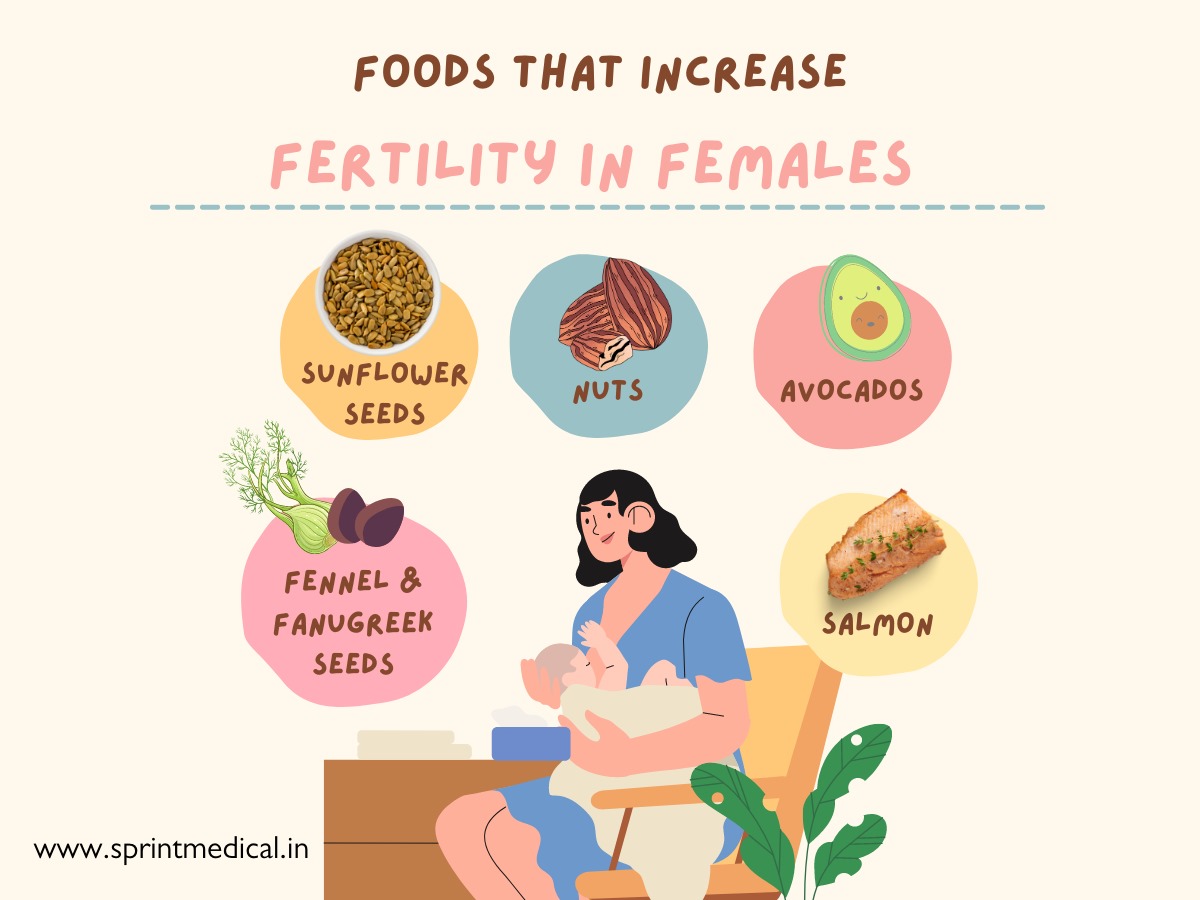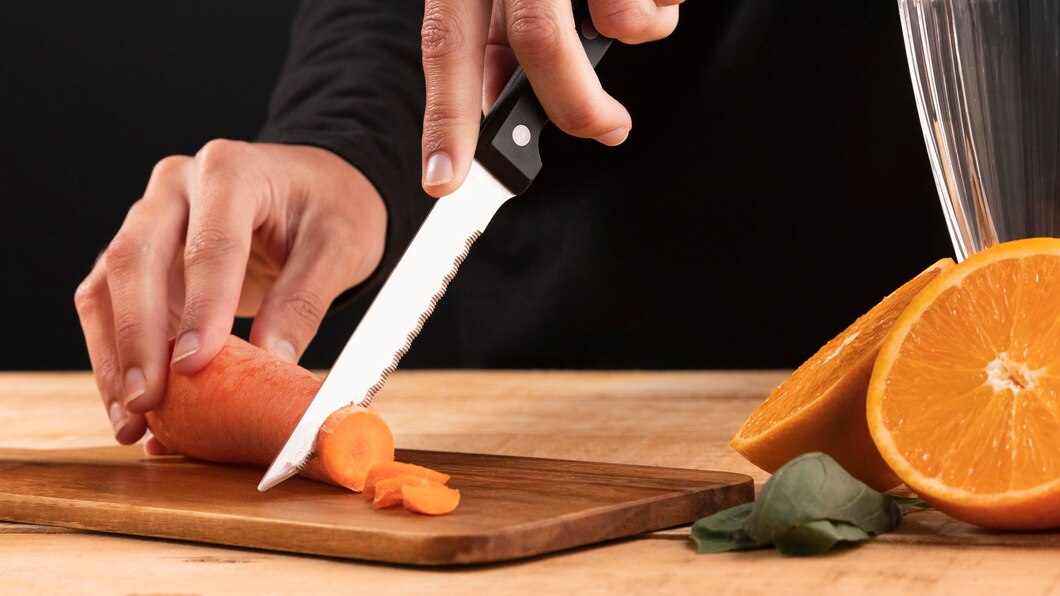food
Nutrient-Rich Foods to Increase Fertility Naturally and Effectively

Fertility can be influenced by a variety of lifestyle factors, and one of the most impactful ways to support it is through diet. Nutrient-rich foods to increase fertility are not only beneficial for reproductive health but also support overall wellness. Choosing foods that are packed with vitamins, minerals, antioxidants, and healthy fats can help regulate hormones, improve egg and sperm quality, and create a healthier environment for conception. This article explores some of the top nutrient-rich foods to increase fertility and how they contribute to reproductive health.
Leafy Greens: High in Folate and Iron
Leafy greens such as spinach, kale, and Swiss chard are foods to increase fertility. These greens are rich in folate and iron, two nutrients essential for reproductive health. Folate, a B vitamin, plays a crucial role in DNA synthesis and cell division, supporting healthy fetal development in early pregnancy. Iron, on the other hand, helps prevent anemia and supports healthy blood flow, which is essential for a healthy uterus.
Including a variety of leafy greens in your diet can help balance hormone levels, regulate ovulation, and prepare the body for pregnancy. For optimal benefits, try to consume a serving of leafy greens daily, whether in salads, smoothies, or stir-fries.
Berries: Antioxidant Powerhouses
Berries such as blueberries, strawberries, and raspberries are excellent sources of antioxidants, which play a significant role in reducing inflammation and protecting cells from damage, including reproductive cells like sperm and eggs. Antioxidants help combat oxidative stress, which can negatively impact fertility by harming reproductive cells and hormones.
The antioxidants in berries, such as vitamin C and flavonoids, support healthy sperm quality in men and egg quality in women, boosting the chances of conception. Including a variety of berries in your diet is easy—try adding them to smoothies, yogurt, or oatmeal for a nutrient-packed start to your day.
Fatty Fish: High in Omega-3 Fatty Acids
Fatty fish, such as salmon, sardines, and mackerel, are rich in omega-3 fatty acids, which are essential for hormone production and overall reproductive health. Omega-3s are known to reduce inflammation, regulate menstrual cycles, and improve blood flow to reproductive organs.
Research has shown that omega-3 fatty acids can improve egg quality and help balance hormones, creating a more conducive environment for conception. For those trying to conceive, adding fatty fish to your diet a few times a week can be highly beneficial. However, be mindful of the type of fish you choose, as some species have high mercury levels which can harm fertility.
Nuts and Seeds: Packed with Healthy Fats and Vitamin E
Nuts and seeds, such as almonds, walnuts, chia seeds, and flaxseeds, are great for fertility due to their high content of healthy fats, vitamin E, and zinc. Healthy fats, such as those found in nuts and seeds, are essential for hormone production and maintaining a regular menstrual cycle.
Vitamin E is an antioxidant that helps protect sperm and egg cells from oxidative damage. Zinc is also crucial, as it plays a role in cell division, hormone production, and the function of reproductive organs. Including a handful of nuts and seeds in your daily diet or adding them to meals like salads, oatmeal, or yogurt can support both male and female fertility.
Whole Grains: A Source of Complex Carbohydrates
Whole grains such as quinoa, oats, brown rice, and barley are excellent sources of complex carbohydrates and B vitamins, which are essential for hormone balance. Unlike refined grains, whole grains help maintain steady blood sugar levels, which is important for regulating insulin—a hormone closely related to reproductive hormones.
Additionally, whole grains contain fiber, which can help the body eliminate excess hormones and toxins that may negatively impact fertility. Swapping refined grains for whole grains can support hormone balance and improve fertility outcomes.
Conclusion
Incorporating nutrient-rich foods to increase fertility in men and women naturally can significantly impact reproductive health and the ability to conceive. By choosing foods rich in antioxidants, healthy fats, vitamins, and minerals, individuals can create a healthier foundation for fertility. Leafy greens, berries, fatty fish, nuts, seeds, and whole grains all contribute essential nutrients that support hormone balance, egg and sperm quality, and overall reproductive wellness. A balanced diet that prioritizes these nutrient-dense foods can be an effective and natural approach to enhancing fertility and preparing the body for a healthy pregnancy.
food
Indícame el Camino a la Tienda de Alimentos Más Cercana

Finding a nearby food store has never been easier, especially with today’s tools and resources. Whether you’re in an unfamiliar neighborhood, out of your usual routine, or simply unsure of where to go, this guide will help you navigate to the closest food store quickly and efficiently. Let’s make sure you’re never too far from your next grocery run.
Why Knowing “Indícame el Camino a la Tienda de Alimentos Más Cercana” Matters
In everyday life, being able to locate the nearest food store can save time, energy, and even money. Whether you need fresh produce, snacks, or pantry staples, the convenience of knowing where to go can make your day less stressful. Plus, in emergencies, such as last-minute dinner prep or an unexpected gathering, this knowledge is invaluable.
How to Find the Nearest Food Store
Here’s a step-by-step breakdown of how to easily locate the nearest store:
1. Use a Smartphone or GPS Device
- Google Maps: Open the app and type in “food store near me” or “tienda de alimentos más cercana.” It will provide a list of options, complete with distances, ratings, and reviews.
- Voice Commands: If your phone supports voice assistants like Siri or Google Assistant, simply say, “Indícame el camino a la tienda de alimentos más cercana,” and let the device do the work.
- Navigation Apps: Other tools like Waze or Apple Maps work just as effectively for finding stores nearby.
2. Ask the Locals
Sometimes, the best advice comes from people who live in the area. If you’re out and about, don’t hesitate to ask someone, “¿Dónde está la tienda de alimentos más cercana?” Most people are happy to help.
3. Look for Street Signs or Landmarks
Many food stores are conveniently located near busy intersections, malls, or residential areas. Keep an eye out for visible signs that say “Market,” “Grocery,” or “Alimentos.”
Helpful Tips for Using Navigation Tools
Choose the Right Store
Not all food stores are the same. Some specialize in fresh produce, others in budget-friendly items, and others may cater to organic or international products. Check reviews and photos to find one that meets your needs.
Save Your Favorites
If you find a store you like, save its location on your map app for future reference. This way, you won’t have to search again next time.
Be Prepared for Busy Times
Stores near you might be crowded during peak hours like weekends or evenings. If possible, plan your visit during quieter times.
Navigating Without Technology
If your phone is out of battery or you’re in an area with limited connectivity, try these old-school methods:
- Printed Maps: Always handy for road trips or unfamiliar towns.
- Ask at Gas Stations: Employees usually know the surrounding area well.
- Observe Foot Traffic: People carrying grocery bags are often coming from nearby stores.
Benefits of Shopping Locally
Choosing a nearby store has advantages beyond convenience:
- Support Local Businesses: Shopping locally helps your community thrive.
- Reduce Carbon Footprint: Walking or biking to the store is environmentally friendly.
- Save Time: Less travel means more time for what matters most.
Conclusion: Never Lose Your Way
The next time you need to find a store, remember that with a bit of preparation, locating the nearest tienda de alimentos is a breeze. Whether you rely on your phone, the help of others, or your own instincts, there’s always a way to get what you need.
FAQs
1. Can I find specific food items using navigation apps?
Yes! Apps like Google Maps and Yelp allow you to search for specific items or store types.
2. What if I don’t have internet access?
Look for public Wi-Fi spots, or rely on printed maps and local advice to guide you.
3. Are there apps that cater specifically to grocery shopping?
Yes, apps like Instacart and Shipt can show you nearby stores and even allow you to order groceries for delivery.
4. Is it safe to ask strangers for directions?
In most cases, yes. Just approach people in well-lit, public areas and ask politely.
5. How do I avoid getting lost on the way?
Double-check directions before starting your journey and pay attention to landmarks along the way.
6. Are online grocery stores a good alternative?
Absolutely! Many platforms deliver groceries right to your door, saving you the trip entirely.
food
5 Things You Need to Know Before Booking a Food Truck for a Birthday Party

Birthday parties are one of the best celebrations in our lives that bring tremendous joy and happiness, especially for kids. Planning a birthday party with a food truck can create an unforgettable memory for all. Children are playing, and guests are interacting while getting their favorite food from the mobile kitchen, which is the best experience they can enjoy.
Choosing the right food truck for birthday party catering requires carefully searching for the best options and evaluating the services. Also, you need to consider the pricing and menus. In this post, we will share the top factors you need to know before hiring a food truck. Let’s delve into the details.
5 Factors to Consider Before Hiring a Food Truck for a Birthday Party
Catering service significantly contributes to the success of any celebration. People can leave your party with joy if they can enjoy delicious meals and experience top-notch food serving. Here are some essential factors you need to consider before booking a food truck for your birthday party.
1. Determine Guest Count and Service Timing
Knowing how many guests you have and when you need the food truck to serve is key to a successful food truck birthday party. A food truck can serve an average of 40-60 customers every hour. For larger events, use the general rule of one truck for every 200–300 guests to ensure that everyone gets food promptly.
However, you will need more food trucks if you plan a specific meal time when everyone will sit together and eat simultaneously. Consider the duration of your party and whether you want continuous food service or just specific meal periods.
2. Be Aware of the Pricing Model
Food truck catering services usually have unique pricing structures. For private birthday parties, typically, the food truck follows a catering structure, where you pay a flat rate based on an agreed menu and headcount. This system gives you more control over your overall budget and guarantees that all your guests can eat without paying individually.
When you ask for prices from food truck vendors, make sure you ask for the following:
- Deposit requirements
- Minimum guest counts
- Charged for travel or setup
- Payment methods accepted
- Cancellation policies
3. Consider Space and Setup Requirements
Planning for a suitable location is crucial for the success of a food truck birthday party. Your venue needs to be provided:
- A flat parking area for the truck to enter, serve, and exit
- Ample space for lines to form
- Distance from main party activities to avoid overcrowding
- Perfect access for the food truck to enter and exit
Also, you should talk to the vendor about whether they need access to power sources or if they’re going to bring their generator. If they have a generator, arrange the seating areas away from the truck to avoid noise and disturbance.
4. Customizing Your Meals and Other Dietary Needs
When you decide on menus for birthday parties, carefully consider your guests’ dietary preferences. Modern food trucks offer extensive and customizable menu items to meet multiple dietary restrictions. However, you need to verify the diverse menu options beforehand.
When planning the menu:
- Request sample menus
- Inquire if there are vegetarian, vegan, and gluten-free choices available
- Consider whether the cuisines are appropriate for your guest demographic or religion
- Ask if they can alter dishes according to allergies or preferences
5. Book in Advance and Plan for Contingencies
The demand for food trucks is skyrocketing, particularly around peak party times. Book as soon as you fix the celebration date and an approximate number of guests.
When finalizing arrangements:
- Get all agreements in writing
- Confirm setup and service hours
- Backup plans if the weather goes south
- Ensure your selected food truck has proper permits and insurance
- Discuss how you will communicate with the vendor for any last-minute changes
Also, remind your guests beforehand that you are bringing food truck catering. This creates anticipation and allows them to make plans in time. Perhaps you even share the menu in advance, speeding up ordering on the day!
Final Thoughts
Food trucks offer a unique and memorable experience for birthday party catering. Following these essential factors during your planning process, you can host an exceptional birthday party that your guests will talk about long after the party ends.
food
Why Damascus Knives Are Perfect for Best Food Quality

When it comes to preparing high-quality food, having the right tools is essential. Knives are arguably the most important tool in any kitchen. They influence the quality of the food in several ways, from the precision of the cuts to how the ingredients retain their flavor. This guest post will discuss why knives from dskkblade knife store are perfect for achieving the best food quality, highlighting the importance of sharpness, material, technique, and maintenance.
The Role of Sharpness in Food Quality
A sharp knife is essential for cutting food precisely, without crushing or tearing it. When you use a dull knife, it may force the food apart rather than cutting through it smoothly. This can damage the structure of the food, leading to a loss of texture and flavor. The damascus knives, on the other hand, allows for clean cuts, preserving the integrity of the ingredients. Whether slicing vegetables, carving meat, or fileting fish, sharp knives ensure that each cut is accurate and efficient, leading to better food quality and presentation.
Better Precision for More Flavor
Knives allow chefs to have control over the precision of their cuts, which can affect the flavor of the dish. For instance, thin slices of meat or vegetables cook more evenly, preserving their natural flavors and nutrients. When the cuts are uniform, the ingredients cook uniformly, ensuring a consistent taste in every bite. Moreover, finer cuts also help release the essential oils and juices of the food, enhancing the natural aroma and flavor. This level of precision, achieved through the right knives, leads to a better culinary experience.
Versatility for Different Ingredients
Knives come in a variety of shapes and sizes, each designed for specific tasks. For example, a paring knife is great for delicate tasks like peeling fruits, while a chef’s knife excels at chopping and dicing. The versatility of knives means they can handle a wide range of ingredients, from soft fruits to hard vegetables and even tough meats. With the right knife, you can ensure that every ingredient is prepared in the best way possible, enhancing both the texture and flavor of your dishes.
Clean Cuts Retain Nutrients
One of the most significant benefits of using a quality knife is that it retains more of the food’s nutrients. When you use a dull or improper knife, it can crush or bruise the food, causing the juices to spill out. This can lead to a loss of vitamins and minerals, especially in delicate fruits and vegetables. A sharp, well-maintained knife ensures clean cuts, which help retain the nutrients inside the food. This is particularly important for maintaining the overall health benefits of fresh ingredients.
Reduced Oxidation for Freshness
Oxidation occurs when fruits, vegetables, and meats are exposed to air. This process can cause a decrease in freshness, flavor, and nutritional value. Using a high-quality knife helps minimize oxidation, as it makes cleaner cuts that limit the exposure of the food to air. For example, when slicing fruits like apples or avocados, a sharp knife prevents the flesh from bruising, reducing the chances of browning or spoiling quickly. By preserving the freshness of ingredients, knives play a crucial role in maintaining the overall quality of food.
Enhanced Presentation
The appearance of a dish is just as important as its taste. A beautifully presented plate can elevate the dining experience, making the food even more appetizing. Knives are essential for creating clean, uniform cuts that improve the presentation of your food. Whether it’s a perfectly sliced steak or artfully arranged vegetables, knives help you achieve a professional look. This attention to detail not only makes the dish look more appealing but also suggests that the food is of high quality, enhancing the overall dining experience.
Safer Cooking Experience
A good-quality knife can make cooking safer. While this may seem counterintuitive, using a sharp knife reduces the likelihood of accidents. When using a dull knife, you may need to apply more force to cut through the food, increasing the chance of slipping and causing injury. A sharp, well-balanced knife requires less effort and provides better control, making the cutting process safer. In addition, knives with ergonomic handles ensure a comfortable grip, further reducing the risk of accidents in the kitchen.
Better Efficiency in the Kitchen
Having the right knife for the job increases efficiency in the kitchen. Whether you’re chopping, slicing, or mincing, a quality knife allows you to work quickly and accurately. This not only speeds up the cooking process but also ensures that each step is performed correctly. When knives are properly maintained and used for the intended task, they reduce the time spent on prep work, allowing you to focus more on the cooking and less on the cutting. A well-equipped kitchen with the right knives enhances overall productivity.
Long-Term Investment for Quality Food
Investing in high-quality knives is a long-term commitment to producing the best food. While knives may require a higher upfront cost, they pay off in the long run by providing superior performance, durability, and results. Good knives are designed to last for years with proper care and maintenance. They hold their sharpness longer and are made from materials that resist rust and corrosion, making them a worthwhile investment. Over time, a quality knife helps elevate the standard of your cooking, ensuring that your dishes maintain the highest food quality.


















